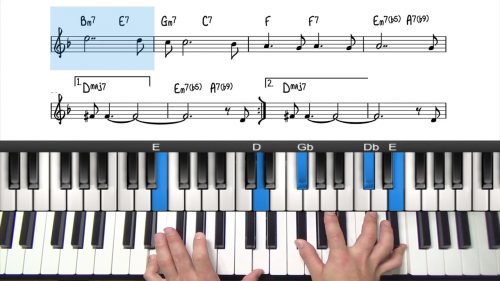Chord Tones
In this lesson we will talk about an approach to improvisation that is very useful when soloing. Many students, even at advanced levels, tend to rely mainly on scales when soloing. This can result in playing scales up and down and can prevent us from thinking melodically. Instead, we can think about using chord tones and this, combined with approach notes, can lead to much stronger melodic ideas.
Scales vs Chords
Let’s take the Dm7 chord and its associated scale, D dorian. If we extend the chord up to Dm13 we have actually covered all the notes in the scale. In essence, the scale is the same thing as the chord. But, by thinking in chords, we are more likely to play with wider intervals.
We will apply these ideas over a 251 progression and then take a look at some examples taken from Bud Powell solos on the tunes Sonny Side and Celia.
Lesson Downloads
-
Chord Tones Lesson Notation File Type: pdf
Practice Tips
-
Try expanding on Tuomo's example of playing chord tones through different inversions by doing the same thing over a tune of your choice.
-
Revisit any licks or transcriptions you have learned and notice where a chord tone rather than a scalar approach is used.
- If you're finding this tricky to put into practice in real-time you can write out some lines using this chord tone approach and then slowly integrate them into your improvisation.







